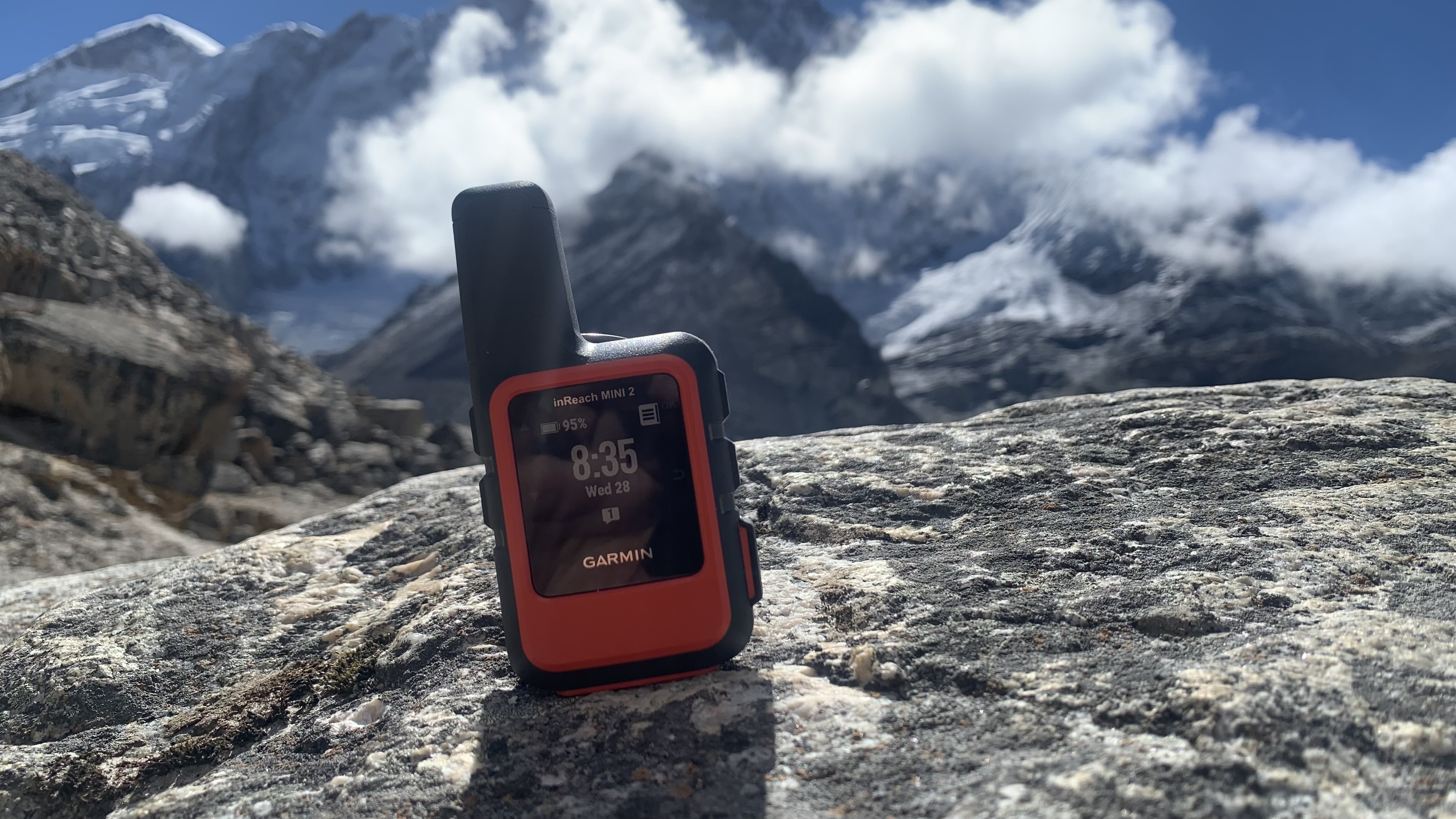Advnture Verdict
When it comes to satellite communicators for the backcountry, there's no denying that Garmin is the gold standard, and the inReach Mini 2 took an already brilliant two-way global messenger and made it slightly better. If your idea of fun involves stints way out in the wild, this is an essential piece of kit that's reasonably easy to use, lasts for months without charging, and could save your life.
Pros
- +
Compact and lightweight
- +
Two-way messaging
- +
Relatively straightforward to use
- +
Works anywhere in the world
- +
Amazing battery life
- +
Allows you to message from your phone
Cons
- -
Requires subscription plan
- -
No keyboard
You can trust Advnture
Garmin inReach Mini 2: first impressions
If you're heading out into the backcountry in any season, one thing you can't rely on is cell service, and that's why a satellite communicator is such a vital piece of equipment. There's no doubt in anyone's mind that Garmin is the gold standard in satellite messengers – handheld devices that allow you to signal for help, and sometimes more, even when you're far from civilization.
Early satellite communicators simply allowed you to trigger an emergency alert and relay your location, but these devices have grown more sophisticated in recent years. In 2017, after acquiring DeLorme, the Garmin inReach SE+ and inReach Explorer+ were the first from the brand to utilize inReach satellite communication technology, which meant two-way messaging in addition to SOS alerts and GPS navigation capabilities, all using the Iridium satellite network.
Today, Garmin says it receives over 10,000 SOS alerts from inReach devices each year, and the brand has set about making the devices smaller and lighter for backcountry use. The Garmin InReach Mini lived up to its name and presented the communications possibilities in a smaller package. Then the Garmin inReach Mini 2 came along, boasting a larger 1.75-inch display for easier in-device use, a friendlier app, a better battery life, unlimited Cloud Storage, and TracBack routing with off-course alerts.
This device has a small screen that allows you to tap out a message to a loved one or communicate with mountain rescue, and you can also communicate via the Garmin Messenger app on your phone, which is easier and faster. It comes with an all-important SOS button that can trigger an alert to emergency crews and communicate your location.
• List price: $399.99 / £289.99 (doesn't include subscription plan)
• Weight: 3.5oz / 100g
• Battery: Rechargeable internal lithium-ion
• Battery life: Up to 14 days at 10-minute tracking send interval with standard activity recording with full sky view / up to 30 days at 30-minute tracking send interval / up to one year when powered off
• Two-way communication: Yes
• Waterproof rating: IPX 7
• Best use: Any and all backcountry adventures
As long as you have a clear view of the sky above you and aren't under a rocky overhang or a dense canopy of trees, no matter where you are on the planet, you can send a message via the small antennae. A quick caveat here, though: there are a few countries where its use is regulated, and a few hikers have even been arrested for trying to bring one into India so do read up on which countries are embargoed before you buy.
Anyway, assuming you're using your inReach in a country that allows them, if you have an emergency, you'll press the SOS button and a message will go first to the satellites in space, then down to the Garmin Response center in Texas.
Garmin Response will contact the closest emergency services to you to activate mountain rescue, and provide updates to your selected emergency contacts. But that's worst-case scenario. The rest of the time, you can use this device to stay in touch with friends and family, either typing out your own messages or using preloaded ones.
All the latest inspiration, tips and guides to help you plan your next Advnture!
We've used this on the trek to Everest Base Camp and from Swiss mountain cabins and found it all fairly straightforward, plus the battery lasts for months, presuming you're turning it off between uses. Messages take a few minutes to go through, and your loved ones will be able to send you messages back as long as they have the Garmin Messenger app installed. It stands on its own base if you want to set it aside while your message sends and it comes with a carabiner so you can clip it to your backpack if you want to keep it within easy reach.
A full keyboard would make this device even more user-friendly, but would also make it bigger, and of course, the app removes that issue. On the other hand, reliance on the app also means your phone needs to be in good working order. This is also a pricey model that requires a subscription plan – we've compared the different options for you below – and these start at $7.99/month.
That may seem like a big price to pay to go for a hike, but it's a small price to pay for your life, and we think if you're heading out into the wilderness, it's crucial to carry a satellite communicator, and this one has certainly earned its title as one of the best out there.
Garmin inReach Mini 2: in the field
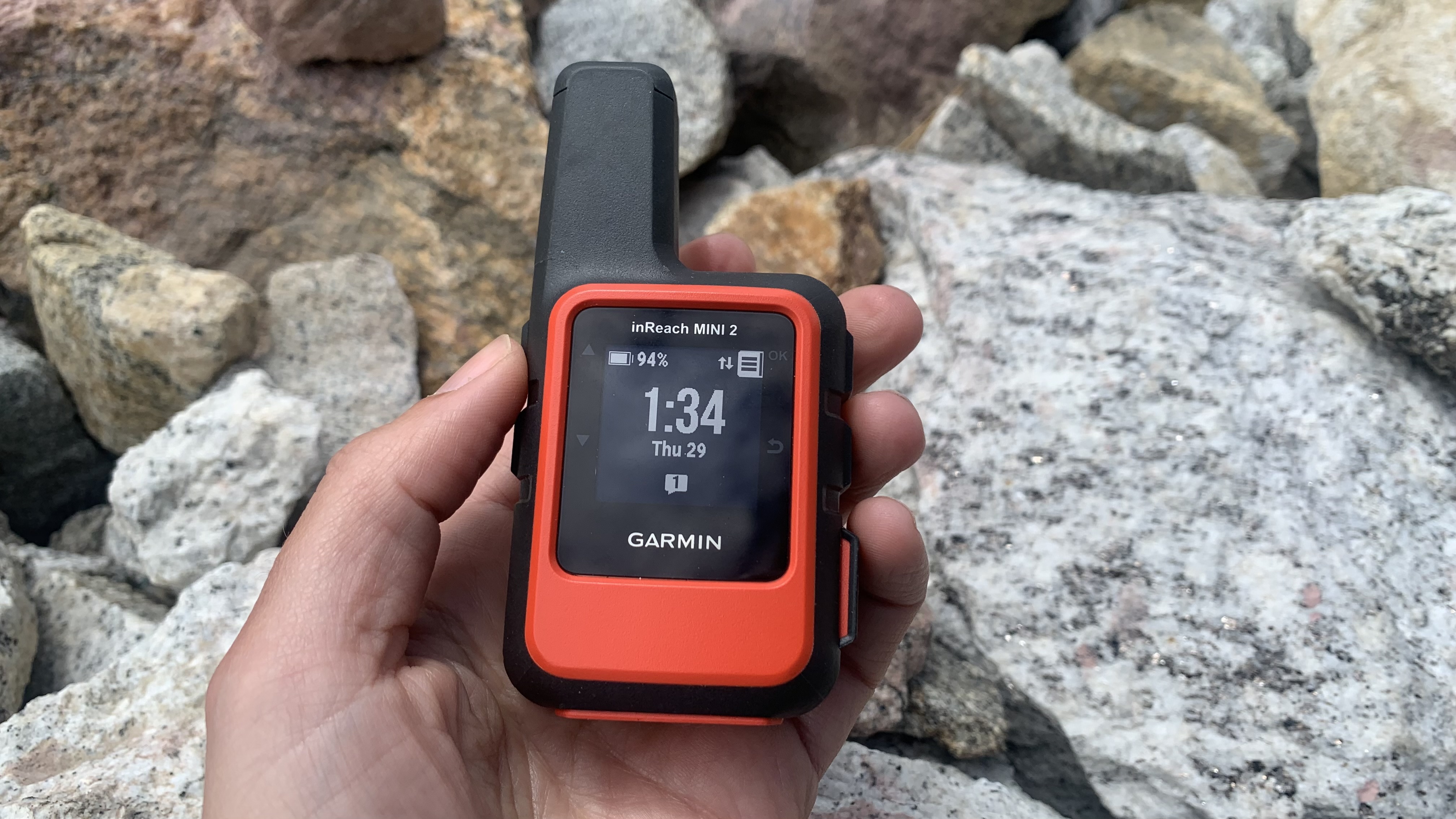
When I was offered the chance to trek over 11 days to Everest Base Camp, I figured it was the perfect opportunity to test out the Garmin inReach Mini 2. After all, just getting to the trailhead requires air travel, and from remote Lukla airport, I'd be heading another 40 miles into the Himalayas. While the trek is better serviced than I'd imagined, there certainly wasn't any cell service, so it seemed the ideal scenario to test the device's legendary functionality.
A few weeks after my return from Nepal, I also took the inReach Mini 2 on a yoga and hiking retreat in the Swiss Alps to a cabin where I knew there wasn't any service or WiFi and for good measure, I've taken it along on a few hikes in the Scottish Highlands but if I'm being honest, I usually have service there.
Now that I've tested this out in three countries and two continents, I think I can confidently deliver my opinion on it.
Here’s how it performed:
Design and features
The Garmin inReach Mini 2 looks like a tiny version of the walkie-talkies you might have played with as a child. It fits easily in the palm of my hand and has a small screen that displays messages and a small antenna that connects to the satellites in space.
On the top is a power button and on left-hand side are two buttons: one to navigate up on the screen and the other to navigate down. On the right-hand side is a select button (labelled with OK) and another to go back, plus that all-important SOS button. That one is actually sheltered under a cap, as shown below so you don't accidentally press it, but it's easy to just peel it back and signal for help if things go wrong.
Those buttons, which aren't that unlike the controls found on most Garmin watches, let me send messages to loved ones while on my travels and gave me some peace of mind as I ventured further afield, but there are loads of other features too.
From the home screen, you can use the up or down buttons to scroll through the menu, which includes checking messages, navigation (I checked the digital compass was accurate but won't pretend I used it to bushwhack my way across the Khumbu Valley), turn on live location tracking and get a weather forecast, which is super handy. There's also TracBack routing, which helps find your way back to your start point if you get lost or find yourself in the fog, much like what you can find on the Garmin Fenix 8.
You can send photographs to loved ones via the Garmin app, but not in the device itself and even link your Facebook account to your Garmin app and post directly to social media, but I have to admit I preferred to skip this feature.

Weight and portability
At just 3.5oz (100g), the Mini 2 is comparable to a bar of soap or a deck of cards, meaning I didn't notice it in my daypack on my treks, and it's super portable too. It's small enough that I usually just stash it in the lid pocket of my Osprey Tempest 33, but it comes with a carabiner, which makes it really easy to clip onto the shoulder strap.
I wasn't in such treacherous terrain that I felt I needed to carry it this way, but certainly if I was picking my way across a steep trail where I felt rockslides were a possibility, I can see why I might want it within instant reach. For the purposes of thorough testing, that's how I carried it in the Alps and again, it's so small and light that I didn't even notice it.
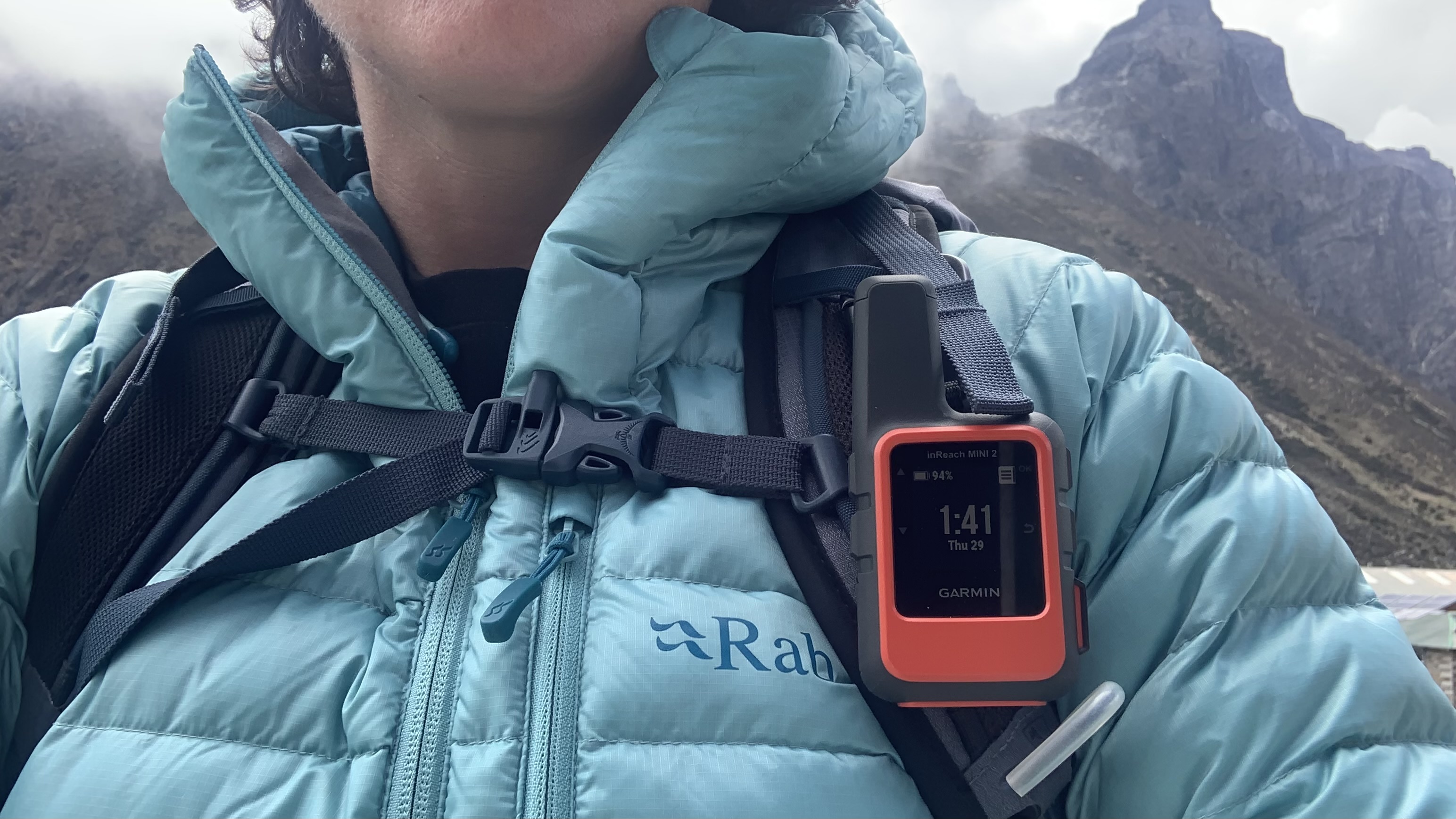
Ease of use and messaging
I tend to think the litmus test for usability is whether or not you can figure out how to work a device without reading an instruction manual, and I'm pleased to say that with a little practice, I found the Mini 2 straightforward to use.
I did play around with it a little at home once my subscription was activated and as I set up the Garmin Messenger app on my phone, and I sent a few messages using the app on my phone during my first couple of days, but the first time I used the actual device properly was just after leaving Tengboche Monastery. It was the fourth day of my trek and I had just had a chance encounter with Tenzing Norgay's son Jamling, just a few days before the anniversary of his father's first ascent of Everest. Giddy with excitement, I sat down on a rock and powered up the inReach to tell my editor about the fortuitous meeting.
The device comes preloaded with a few messages such as "I've arrived!" and "I'm having a great time" – you can also preload your own messages at home on the app – but obviously, none of these would do the experience justice. So using the up/down and select buttons, I started typing out the message "I just met Tenzing Norgay's son" using the alphabet down the left-hand side of the screen. If you were born before a certain date, this is just like typing out text messages on an old cellphone, and if you were born after a certain date, the closest thing I can liken it to is searching for a video on YouTube or Netflix.
Anyway, I found it all quite painless, though I can imagine it being more challenging to some elderly users and those with vision problems because the screen is quite small. It does come up with predictive text that's reasonably helpful, so you may not have to type every word, and you've got 160 characters to convey your message, which is less than you'll get on Twitter.
I hit send and then went to turn off the device, when it warned me that the message hadn't been sent yet, so I set it aside, and only a couple of minutes later, I had received a response.
It's definitely easier to use the app, but to me, the whole point of the device is reducing reliance on my phone. I used it again in the Alps to send a few messages and found they took a little longer to go through (perhaps 5 to 7 minutes), but the more I use it, the easier it all becomes.
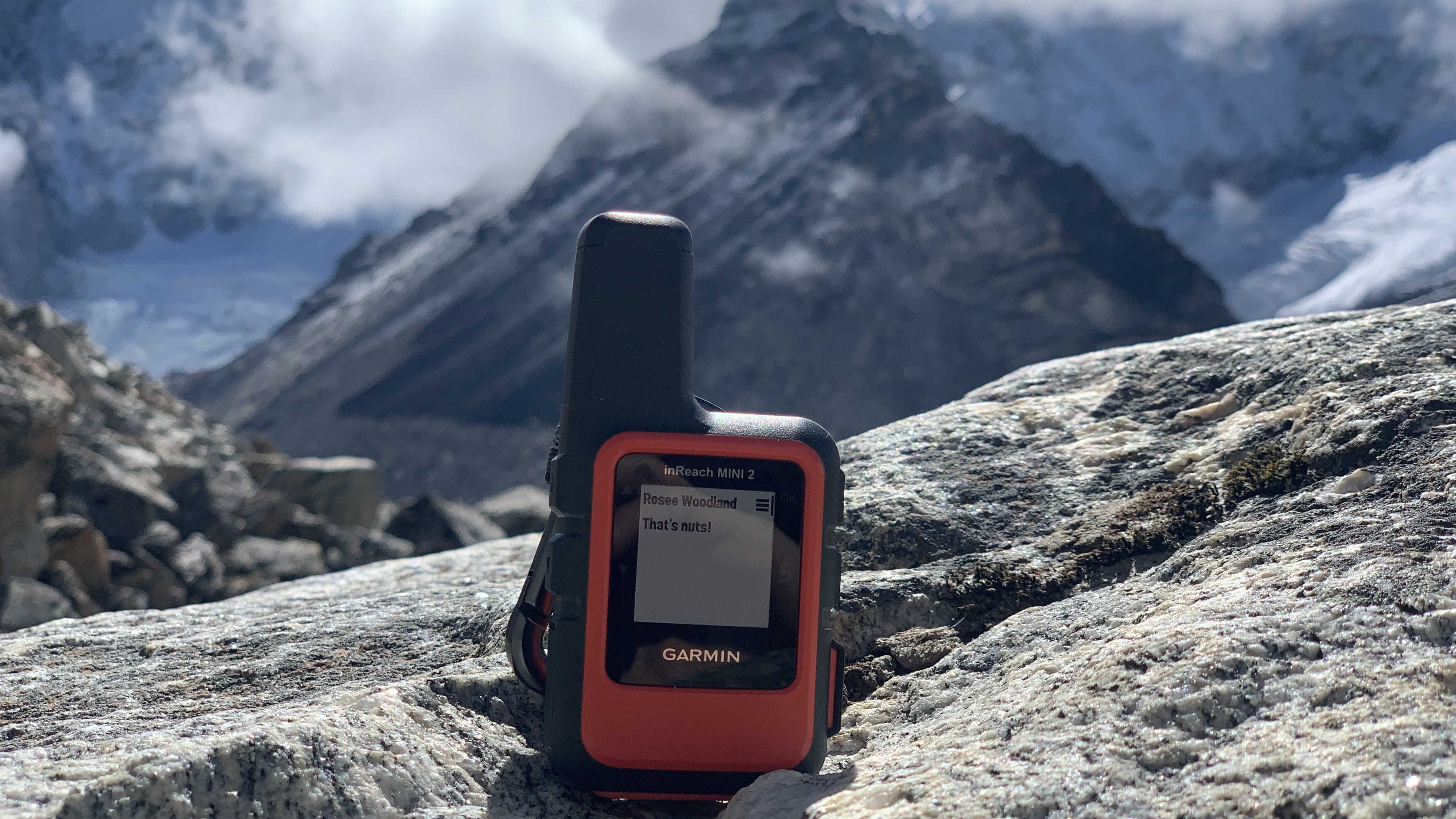
Battery life
Improved battery life is one of the advantages of the Mini 2 over the Mini, and I charged the device fully using the USB-C cable provided before setting off for Nepal in early May. Since then, I've turned it on and off no more than a dozen times to send and receive messages, and at last check, it still had 64% battery left.
Obviously, if you're using it as your primary means of communication, you like to send a lot of messages from the wild and keep it on all the time for tracking and navigation purposes, it's going to drain faster, and Garmin's guide suggests that you'll need to charge it roughly every 14 days in that scenario.
Personally, I can't really understand why you'd use it as your primary means of navigation when GPS watches and maps exist, so I'd suggest keeping it mostly off and saving it for check-ins and emergencies so you never have to worry that you'll run out of juice if you get cliffed out.
If you keep it off and just bring it with you on every adventure as a standard part of your kit, Garmin says you can expect a full year out of a single charge. I believe them, but I still think it's vital to check before you go out.
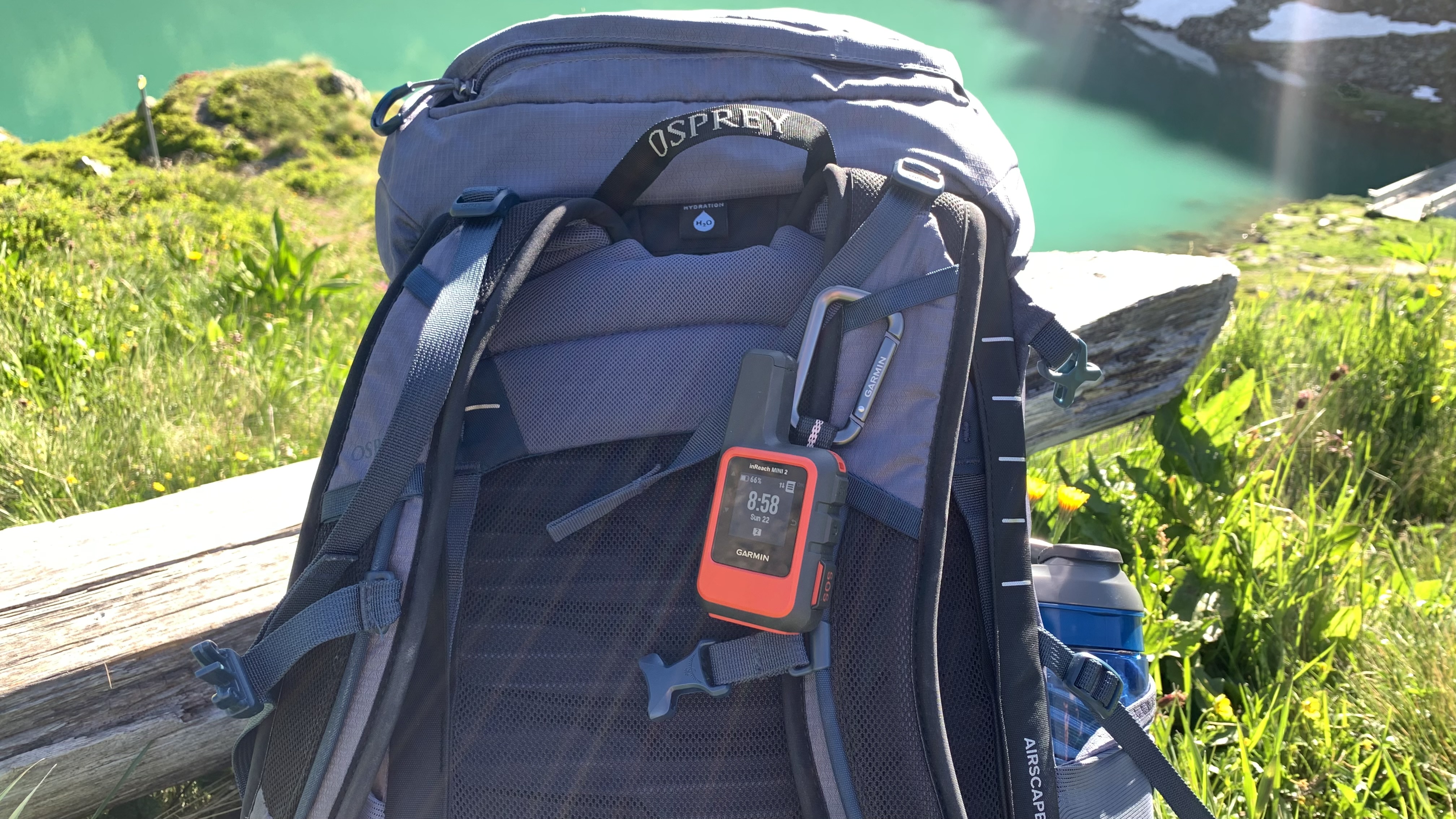
Value
With a retail price of $399.99 / £289.99, I can understand why people hesitate over making this purchase. It's certainly cheaper than most GPS watches and smartphones you're likely to buy these days, but since those increasingly come with SOS functionality, it makes sense that some people don't want to cough up.
Of course, that one-off payment isn't the whole story, because you need a subscription plan to use your inReach. Every plan carries a one-time activation fee, and then the cheapest plan is $7.99 (£7.99) per month, which does add nearly $100 (£100) a year. But the plans are quite flexible, and though regular mountaineers should probably just have an ongoing plan, you can also go month-to-month, which means you could activate it for a trip like mine, or only in the months when you tend to be out in the backcountry a lot.
In short, it does add up the more you want to use it, but as a journalist who often writes about hikers whose lives have been saved thanks to an inReach device, I think that when you tumble down that canyon or find yourself in whiteout conditions on Mountain Washington, the last thing you'll be thinking is how glad you are to have saved a few hundred dollars.
There are cheaper satellite devices available such as the Zoleo (though this one has a more expensive subscription so I think it all comes out in the wash) and if you have a newer iPhone with SOS, you could keep it in a waterproof case and carry a portable charger at all times and you might be pretty well-serviced. But I think the bottom line is that this device does what it says on the tin, does it well, and you won't regret owning it if you find you're faced with spending the night on a mountain.
Garmin inReach consumer subscription plans
Subscription plan | Enabled | Essential | Standard | Premium |
|---|---|---|---|---|
Activation fee | $39.99 / £39.99 | $39.99 / £39.99 | $39.99 / £39.99 | $39.99 / £39.99 |
Monthly fee | $7.99 / £7.99 | $14.99 / £14.99 | $29.99 / £29.99 | $49.99 / £49.99 |
Check-in messages / Reactions | $0.10 ea / £0.10 ea | Unlimited | Unlimited | Unlimited |
Text messages / Weather requests | $0.50 ea / £0.50 ea | 50 total | 150 total | Unlimited |
Photo and voice messages | $1.00 ea / £1.00 ea | 10 total | 25 total | 50 total |
Live tracking / Location requests | $0.10 ea / £0.10 ea (10 min+ interval) | $0.10 ea / £0.10 ea (10 min+ interval) | Unlimited (10-min+ interval) | Unlimited (10-min+ interval) |
Julia Clarke is a staff writer for Advnture.com and the author of the book Restorative Yoga for Beginners. She loves to explore mountains on foot, bike, skis and belay and then recover on the the yoga mat. Julia graduated with a degree in journalism in 2004 and spent eight years working as a radio presenter in Kansas City, Vermont, Boston and New York City before discovering the joys of the Rocky Mountains. She then detoured west to Colorado and enjoyed 11 years teaching yoga in Vail before returning to her hometown of Glasgow, Scotland in 2020 to focus on family and writing.
